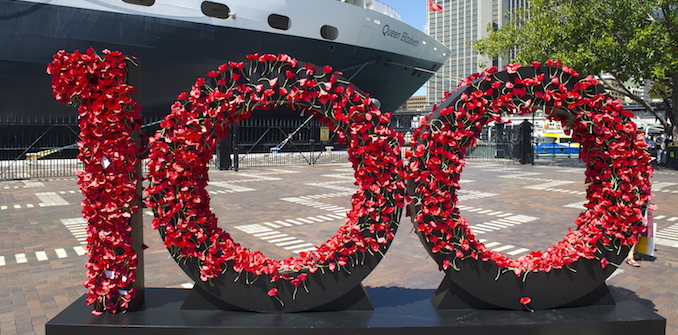
The Anzac Day poppy installation from April5 and Cunard in 2015.
By Alicia Beachley
Brand activation is the art of driving consumer action through brand interaction. In simple terms, the key aim of these marketing campaigns is to get consumers to act. It’s about bringing brands to life via experiences and forming long-term emotional connections. Through these campaigns we are able to directly influence more people to do more, more often!
Brand activation campaigns take many forms and may involve some, or all of the following:
- Consumer promotions;
- Experiential marketing;
- Digital campaigns;
- Shopper marketing (path to purchase);
- Sampling campaigns;
- Sponsorship and partnership leverage; and
- Brand engagement.
Best practice brand activation is strategically led and delivers measurable results, with a focus on return on investment.
To activate a campaign successfully, you need a mix of the following elements: market insight, budget, strong adaptable concepts, consumer desire and interest, integrated support, sufficient time in market and eye-catching creative and support materials.
Getting the right mix is critical to campaign success and even if just one element lets you down – like the creative not being captivating, or the prize not aspirational, the campaign not supported or the promotion not given enough time in market – the brand activation campaign may not meet the objectives set at the outset. There really is a science behind getting the formula correct!
My top five Dos and Don’ts for brand activation are:
- Brand activation should be considered as a vital part of the overall marketing approach, or marketing mix, and not a standalone discipline. With this in mind, it is important that the resources and budget are in place from the start in order to meet objectives and ensure the best results;
- Due to ever changing market conditions, campaigns may need to be tweaked or changed accordingly, so ensuring you have a sound understanding of this knowledge upfront and implementing a test case is a great way to sound out a campaign before national rollout;
- Take the time to consider all the options available to you within the brand activation space. Spend time working out which is the best option for your brand (and budget), and most importantly, which tactics will get you the best return on investment based on the campaign objectives;
- Remember it’s not all about immediate sales – think long term. Brand activation campaigns can generate trial, awareness, brand switching and brand loyalty, so again take the time to employ the right method; and
- Get an agency to help you. There are specialist brand activation agencies that are experts in this space and are dedicated to creating campaigns that deliver.
While brand activation campaigns can achieve outstanding results, conducting a brand activation campaign that is not aligned with the overall brand strategy and doesn’t stem from a brand insight should always be avoided,
But on a more positive note, we do know that a large proportion of consumers with live streaming and on-demand services say they tune out or actively skip ads, so there is the need (and it’s only getting greater) to find another way to connect with consumers and bring them meaningful brand engagement opportunities.
Alicia Beachley is the chief executive of April5.


COMMENTS
SmartCompany is committed to hosting lively discussions. Help us keep the conversation useful, interesting and welcoming. We aim to publish comments quickly in the interest of promoting robust conversation, but we’re a small team and we deploy filters to protect against legal risk. Occasionally your comment may be held up while it is being reviewed, but we’re working as fast as we can to keep the conversation rolling.
The SmartCompany comment section is members-only content. Please subscribe to leave a comment.
The SmartCompany comment section is members-only content. Please login to leave a comment.